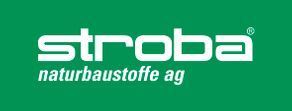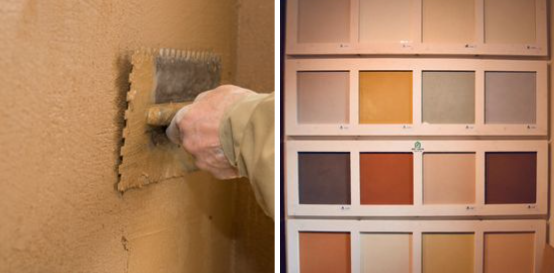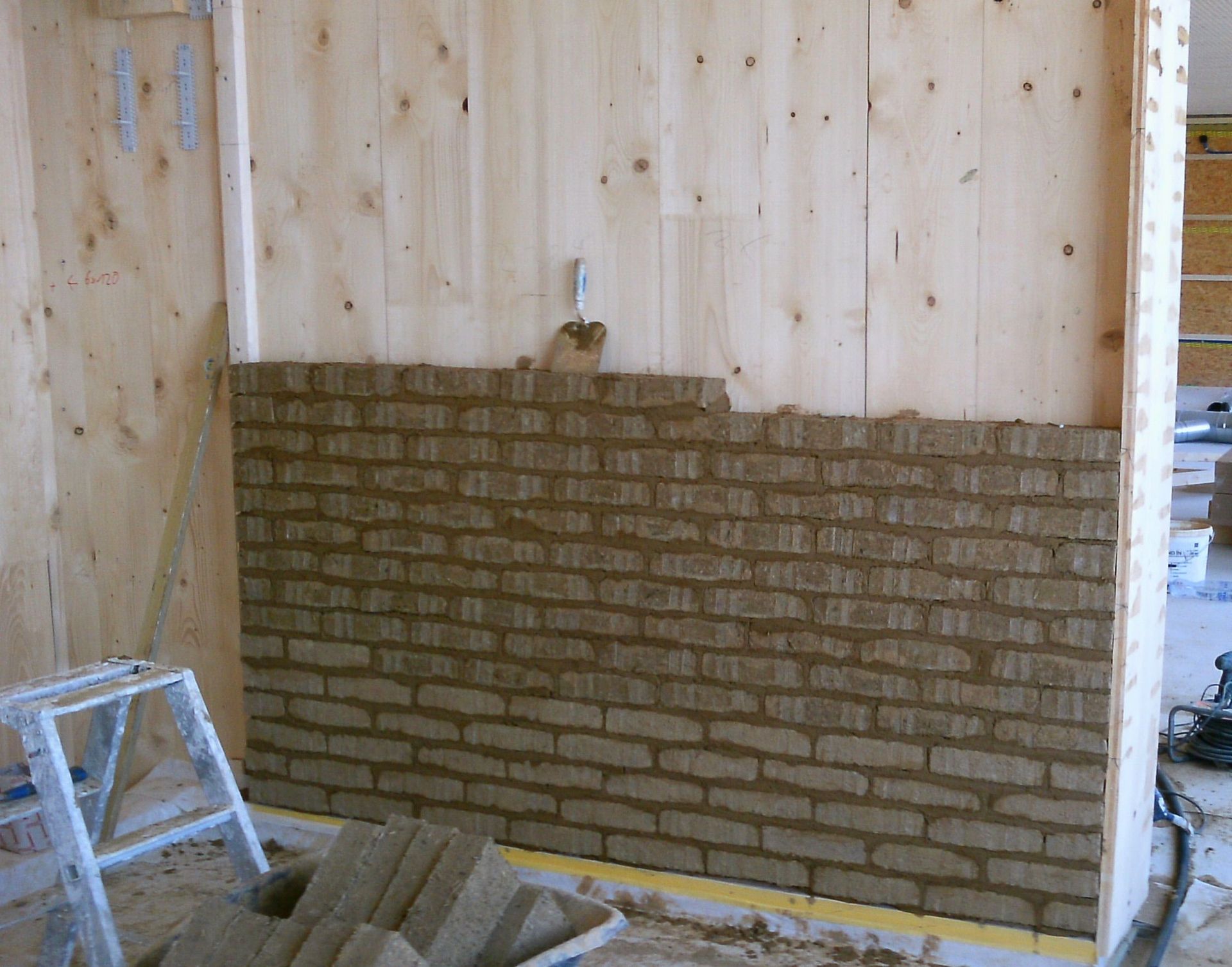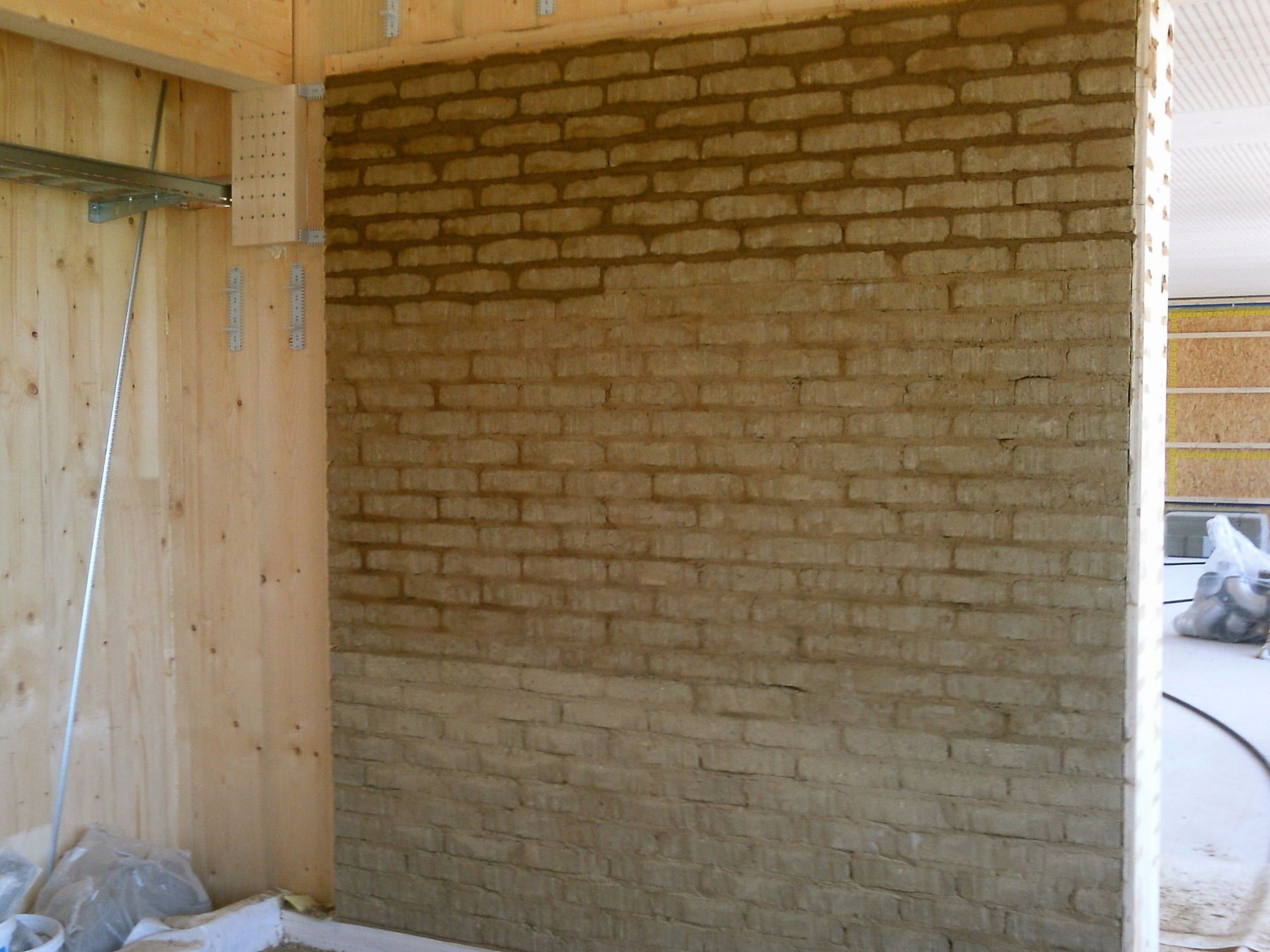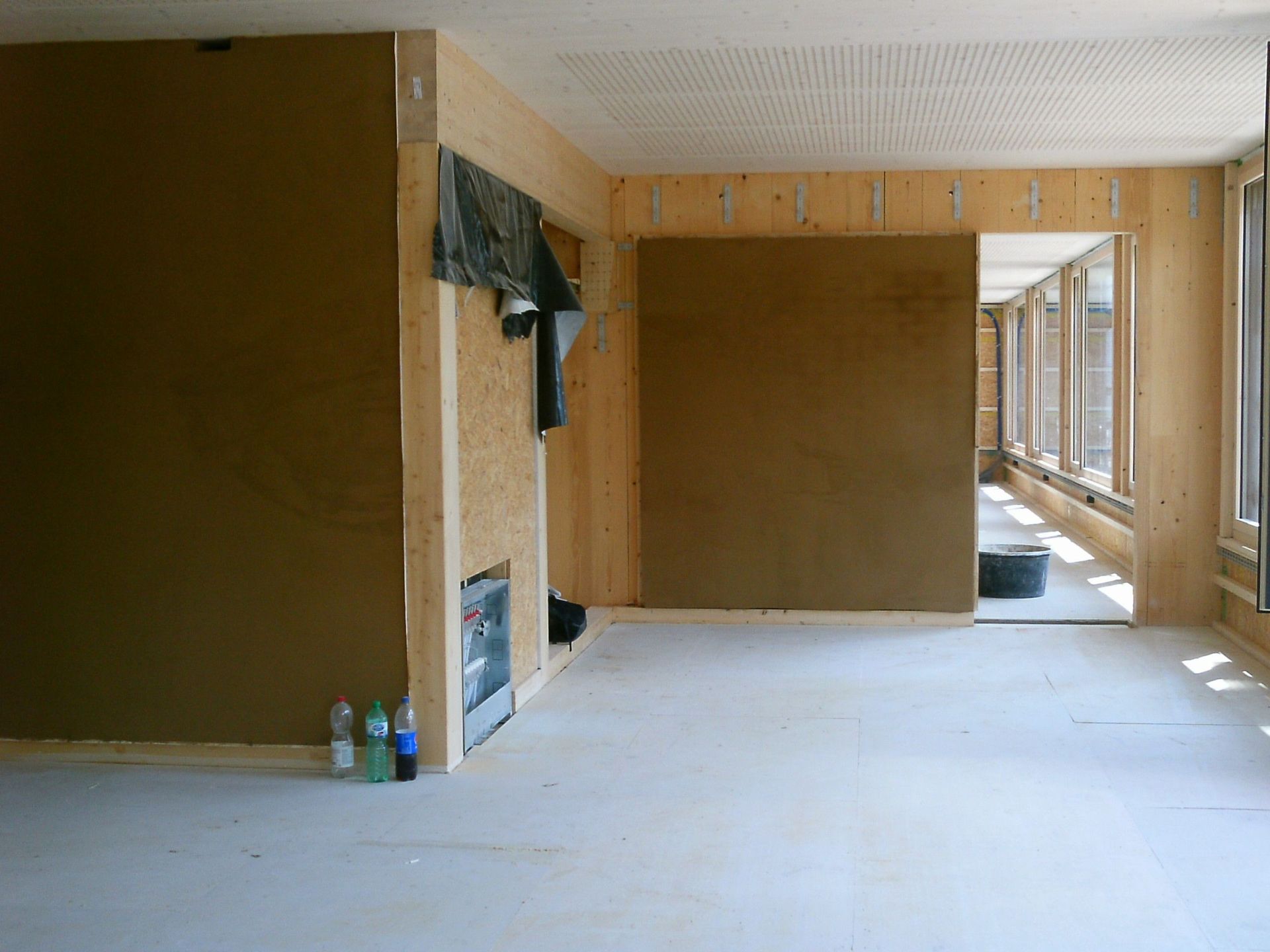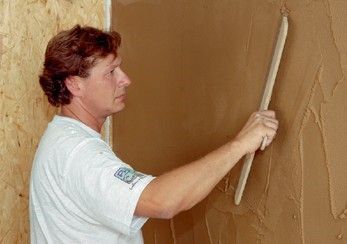Clay as a healthy alternative in house construction
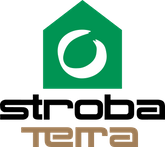
stroba terra Lehmprodukte
Humans have been building their houses with clay since ancient times – in Switzerland, especially as timber frame infill. Clay is abundant throughout the world, and one-third of humanity lives in clay houses. Clay possesses excellent sorption and desorption properties. It ensures a balanced moisture balance in living spaces, which creates a very pleasant microclimate and healthy comfort. Clay is a very good heat storage medium. Constructions made with heavy clay have excellent sound insulation values. Clay has an excellent energy and pollutant balance. Clay is easy to work with, skin-friendly, and waste-free: it does not set chemically and can be repeatedly treated with water. Clay is an ecologically and economically viable and natural building material. It is available in sufficient quantities. The material cycle of clay is ingenious: without any chemical additives, it can be reprocessed as a building material on site by briefly mixing it or returned to the natural cycle without disruption.
Stroba Terra's clay products ensure a pleasant indoor climate and a balanced moisture level in summer and winter.
One of history's oldest building materials is enjoying a renaissance. Building with clay is a trend because clay walls improve indoor climate, dampen sound, purify indoor air, and are environmentally friendly.
Clay plaster improves indoor air quality and is allergy-friendly
Clay walls improve the indoor climate because clay is able to quickly absorb air humidity and release it again when needed (sorption and desorption behavior). Thus, in rooms equipped with Stroba Terra clay products, the relative humidity fluctuates between 45 and 55%. In such an indoor climate, mucous membranes do not dry out, and fine dust formation is reduced. Mold and dust mites also thrive less in such a microclimate, which should be good news for people with dust allergies. Furthermore, clay does not contain any harmful substances that can trigger allergies. The unfired clay flakes of the clay plaster can bind foreign substances and odors, thereby significantly improving the indoor climate. Stroba Terra clay products have been certified "recommended for residential medicine" by the Society for Residential Medicine, Building Hygiene, and Indoor Toxicology (eVerhalten).
Clay walls store heat and serve as sound insulation
Rooms furnished with clay feel warm in winter and cool in summer. Due to its high density (up to 2000 kg/m3), clay is an excellent heat storage material. This property of clay as a building material is also utilized in the construction of stoves. Clay also exhibits excellent sound insulation properties. Depending on the construction, solid clay can achieve airborne sound insulation levels of up to 55 decibels, and partition walls with clay panels can achieve up to 63 decibels.
Clay is palpable (better)
The benefits of building with clay are tangible. When clay is incorporated into walls in the form of clay bricks or clay panels, or when it is applied with clay plaster, a feel-good atmosphere is automatically created in every room. The fresh, breathable air, the pleasant temperature, and the balanced humidity make staying in your own four walls a pleasure. In the bedroom, you can breathe deeply, fall asleep peacefully, and recharge your batteries for the next day. Clay walls are also ideal in wine cellars and bathrooms, promoting the desired indoor climate.
Clay as a building material
Clay is most commonly used in house construction in the form of clay plaster. This not only benefits from clay's positive structural properties, but also from its aesthetic advantages, as clay is malleable. Smooth or textured walls and ceilings, rounded or right-angled corners, are easy to create. You also determine the color of your ceilings and walls.
Clay is colored - and available as ready-made clay powder
Stroba Terra clay plasters are available in 19 different base colors. Stroba Terra clay plasters are machine-applied ready-mixed products. They are permeable to vapor diffusion and dry in the air. They are composed of colored loams and clays, mixed-grain sands and quartz with a grain size of up to 1 mm, and cellulose. From light white and Siena red to crystal blue and cocoa – with 19 different base colors, clay plaster is anything but monotonous.
Clay powders can be easily mixed with water, and after just a few minutes, the clay plaster or clay paint is ready to use. Clay paints can also be mixed together to create your very own unique clay paint.

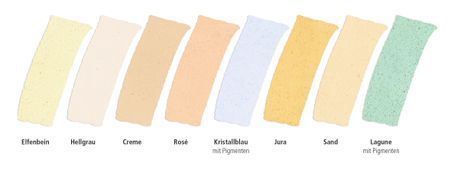
Stroba Natural Building Materials
Stroba Naturbaustoffe offers a comprehensive range of clay powder, clay plasters, clay bricks, clay slabs and clay base plasters under the Stroba Terra brand. All coloured clay plasters can be
The Stroba exhibition can be visited in 8310 Kemptthal. You will also find a wide range of other ecological and sustainable building materials on site and in our online shop.
Clay plaster workshops
In terms of building physics, mineral plasters differ primarily in their setting process. Clay plasters dry through contact with air, while gypsum and lime set through the absorption of water. Working with clay plaster is not difficult and can be learned by anyone, with or without previous experience. We offer Stroba Terra Clay Workshops every spring and fall at the Effretikon Building Center. Additional courses at various locations are available upon request: stroba@stroba.ch
Useful downloads and links on the topic of clay in house construction
Clay building materials
Processing instructions
Clay bricks
Base coats & nets
primer
Clay plasters
Clay paints
Technical assistance




